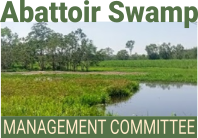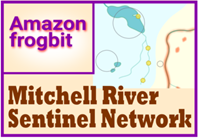
Kosters curse Coordination
Koster's curse entered Australia via materials that were shipped to a palm nursery in Julatten. The plant spread without being identified for some years until Mareeba Shire Council's Sid Clayton recognised it and set the alarm. The plant is listed on Australia's biosecurity register. Due to the very limited infestation, funding was allocated for eradication (the highest level of management action).
Unfortunately the program took quite a bit of time to allocate funding. When it finally arrived, excellent progress on eradication was achieved over about 6-7 years. Then, in 2016, a large outbreak was discovered in remote sections of Wooroonooran National park. No known vector was identified, and the scal eof the infestation triggered a review of funding through the national weeds program.
After expert assessment, the decision was made to withdraw funding for eradication in Julatten over the course of an 18month transition period.
This effectively put the entire project back into the local community and landmanagers.
Summary
- Koster's curse (Clidemia hirta) has high potential to become a “nightmare weed”, infesting private property as well as destroying amenity and biodiversity values in our parks and World Heritage areas.
- Up until 2017, it had been successfully controlled to 2 dozen properties in Julatten. The chances of keeping the weed under control were good, given sufficient determination.
- Class 2 Declared Weeds are the responsibility of land owners to control and remove. So, under the law, each landholder is expected to carry the cost of dealing with the weed.
- Koster's curse is difficult to spot (it looks like a lot of other native plants) and it is difficult to remove. It sets thousands of seeds quickly after flowering, and the seeds spread easily. The only way to control and reduce the danger is through determined removal and ongoing surveillance all around the Julatten area.
- Assistance to landholders is being coordinated by the Mitchell River Watershed Management Group, in collaboration with Mareeba Shire Council, JAMARR, and Biosecurity Queensland.
- Professional spotters and weed contractors are the most effective response. But funding must be secured for ongoing works. We will take advantage of all opportunities for funding to continue operations against the weed.
- To be effective, we will need to work together as a community. Everyone will be asked to pitch in, to assist in some way.
- Our role in the catchment will be to provide ongoing coordination , reporting, and community liaison for the effort. We plan to work with Biosecurity Queensland and Mareeba Shire Council to ensure that the field data collection is continued, private data remains private, and that the community as a whole feels informed and empowered to keep this threat minimised.


